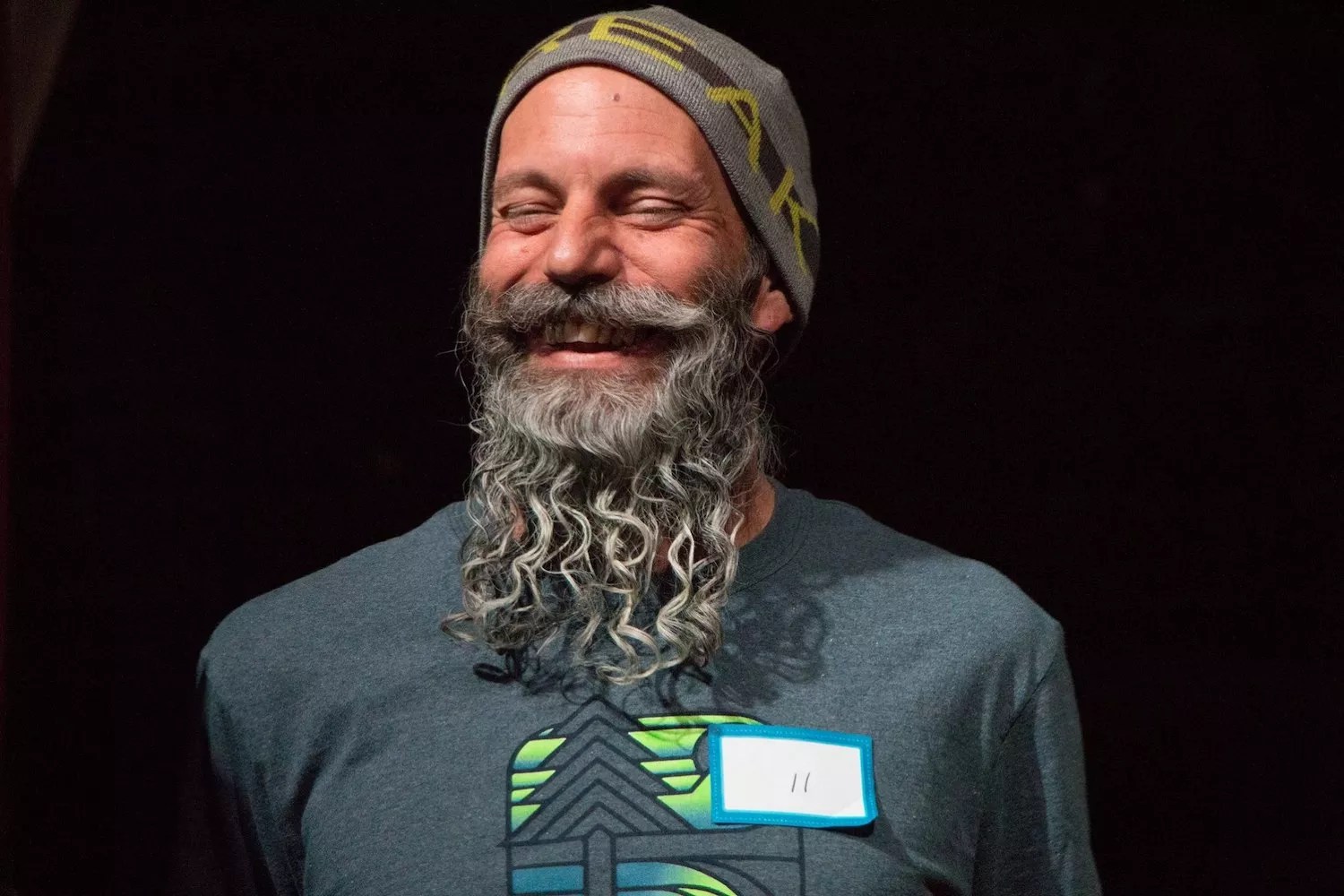
Tobin Voggesser

Audio By Carbonatix
It was a time of limited options. As a cook in the early ’90s, you wore combat boots or some variation of footwear made of leather and steel over hard rubber soles that did little, if anything, to mitigate the pain of spending hours in what were essentially torture devices. Peeling those things off your feet at the end of a long shift and then adjusting to the pain of circulation recommencing was bliss married with agony.
Before Chefwear came along, we had checked or houndstooth rental pants made of polyester, burlap, sandpaper and shame. They never fit and you never felt comfortable. When exposed to high heat, they melted onto your flesh and had to be removed with ice and a quick, Band-Aid-esque rip. Most had belt loops that you filled with makeshift lariats made of stretched out plastic wrap, because in those days you didn’t own a belt (a source of pride, for some reason). Once in a great while you found a pair of pants that actually fit, and on that hallowed date, you did your best to hide them from your cohorts, who would gladly steal them from you. While camaraderie was important, truly wearable pants were like a unicorn. A properly fitting pair combined with a thick, hole-free kitchen towel added up to the Holy Grail; once found, you’d stash them above the ceiling tiles, where they joined whole worlds of lost treasure.
Chef coats and toques, or skull caps, rounded out the uniform, and while the former were just fine minus the French cuffs, the latter always made me feel like we were trying too hard.

Is this the only kind of Beard that should be associated with restaurants?
James Beard Foundation
Around that time, someone thought it would be great to combine MC Hammer pants with chef pants. This was definitely not my thing, and when chiles, fruits, vegetables, fish and a host of other bullshit prints were added to those pants, I wanted to leave the industry and take out as many people wearing them as possible along the way. When cargos and chinos arrived on the scene, that righted some wrongs, but one abomination still exists: fat-ass pants. By that I mean pants with a huge space reserved for what would have to be an unnaturally huge ass. You could fit seven normal butts in any given pair of chef pants. What’s the fucking deal?
Clearly, I have a very fierce fashion sense when it comes to culinary couture.
In the mid-’90s, I made a trip to San Fran to check out a few restaurants, and my visit to Boulevard forever changed my view of uniforms. Nancy Oakes, a visionary when it comes to food, also apparently has a flair for fashion, because her cooks were dressed in baseball caps and dish shirts. That’s very commonplace today, but back then it was revolutionary, because it summed up this whole anti-establishment thing that’s pervasive in kitchens: Her cooks appeared sharp while seeming edgy at the same time. Their outfits said, very loudly, “We care about how we cook, not how we look,” even though that was and remains completely false. If you want your crew to act the part, they have to look the part.
I made the move to jeans and Vans in the kitchen years ago, when managing people and things became more prevalent in my work life than cooking things. I like to think I did it because I don’t take myself seriously, but we all know that’s a lie and that I did it to pretend like I didn’t care about the importance of my position. I haven’t worn a chef coat in years, but while I do love a good T-shirt, I still feel the need for buttons and a collar when in uniform. Explain that hypocritical nonsense. Or is it nonsense? Does it matter in a world where every little thing means so many other things?

Beards, trucker caps and comfortable clothing are the style in restaurant kitchens.
Brandon Marshall
Hygiene has always been a different deal. We were clean-shaven with tidy fingernails and slop-free aprons. Want to know how to spot the hack in a kitchen? Look for the messiest apron. Everyone may be working equally hard, but that’s the person who is flailing. Of course, now we have aprons that cost hundreds of dollars and look like something the Texas Chainsaw Massacre dude and Michael Jackson tailored to take the place of the thing dentists use to protect you from X-rays, with all their buckles, leather pieces, pockets and parts.
And now we also have beards in the kitchen. How did we get here? I’m supposed to be okay with a soupçon of face pubes in my dish? While appropriate clothing items can be highly subjective, beards are gnar. I have many friends who are cheffing right now and doing things right while sporting full-blown beards, and I possess an undying love and respect for all of them, but I gotta know: Why? What’s the allure? It seems hot and potentially hazardous and altogether unmanageable, while also being hot…
In a kitchen.
Around food.
It’s kind of a like a big “fuck you” to industry norms.
…and holy shit. I think I just talked myself out of my own damn argument. Are bearded chefs anti-establishment and thus pro-cooking culture? Is it punk rock to have a beard and I just don’t know it? Is it both?
The details are where the pan meets the heat and salt kisses the flesh.
Jamey Fader, founding chef of Lola Coastal Mexican and a veteran of many other kitchens, is now the culinary director of Marczyk Fine Foods and ready answer all your restaurant-related questions.
What do you think about kitchen fashion? Beards in kitchens? Email your thoughts – and any other questions you might have for Jamey Fader – to editorial@westword.com.